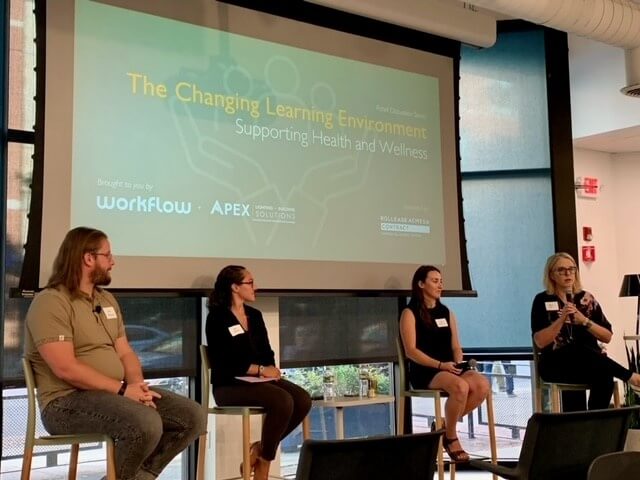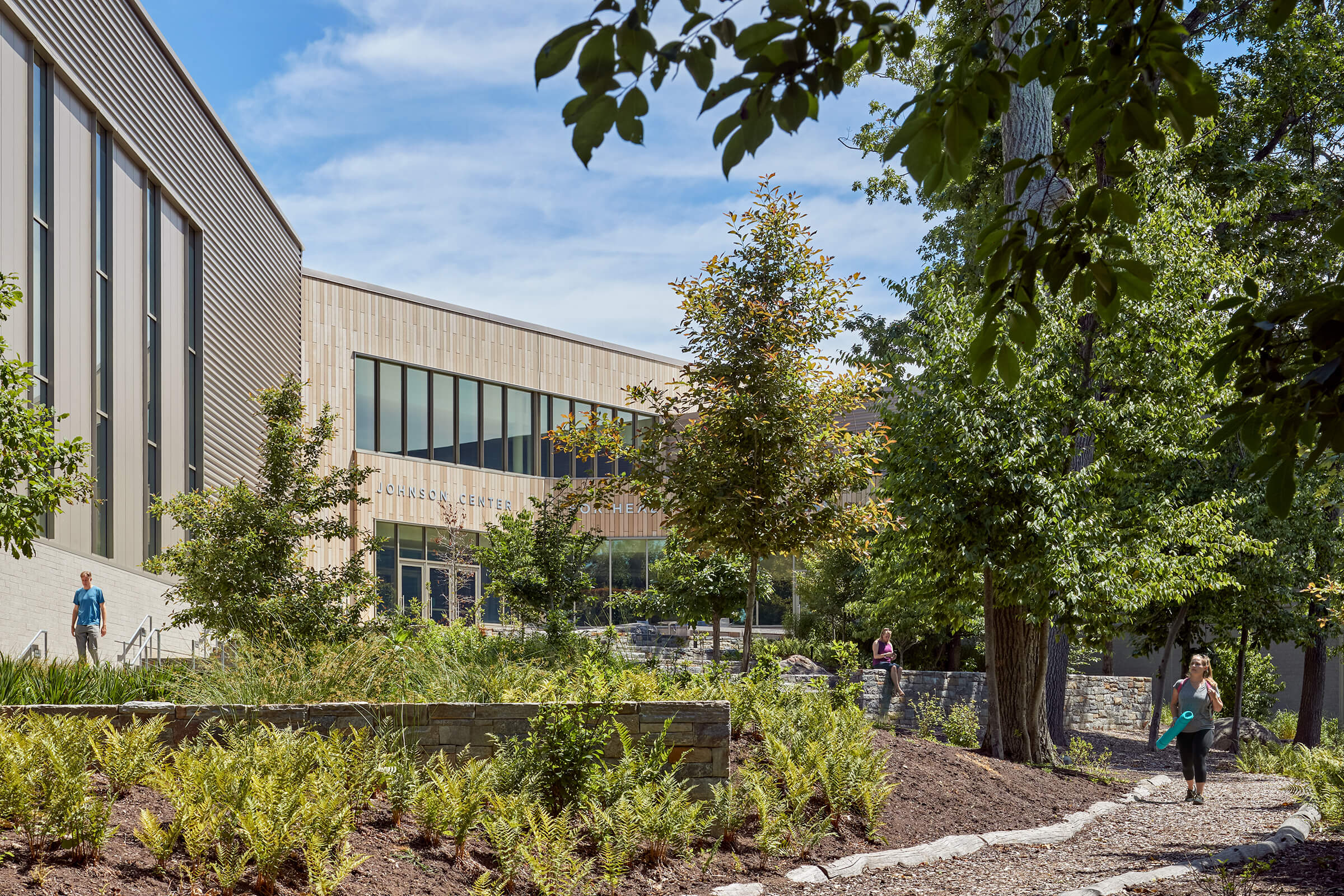The Changing Learning Environment: Supporting Health and Wellness

This August, I had the privilege to serve on a panel that is exploring “The Changing Learning Environment” through a series of themes and topics. This panel focused on Supporting Health and Wellness, and was focused on the student, faculty, and staff experience on today’s campuses, and how shifts are happening quickly and not so quickly to better support wellness for campus community members.
Our panel featured an architect with experience in designing healthier residence halls, a workplace strategist who also brings faculty experience to inform her understanding of the student experience, and myself – bringing my higher education operations knowledge and strategic thinking to bear. Sponsored by Workflow, a workplace strategy firm, and Apex Lighting + Building Solutions, the panel focused on the shifting holistic wellness environment on campuses and how design can influence health and wellness for the campus community.
We first dove into the evolving landscape of higher education and the most pressing challenges our field faces in designing healthy spaces for institutions, discussing the latest student statistics – such as 76% of college students experienced moderate to serious psychological distress, 36% were diagnosed with anxiety1, and in 2022, 25% of students said they often felt isolated from others2. I also referenced the wave of anti-DEI bills passing across the country, and the chilling effect that has on students of color, LGBTQ+ students, and others, who are losing places of safety and respite as multicultural and LGBTQ+ resource centers are closed.


We also discussed in detail how wellness made that shift to a holistic approach, both in how to support students but in the environments they inhabit as well. On today’s campus, wellness has necessarily become the concern of every campus community member – with faculty and staff needing to become more aware of and empathetic towards the lived experience of their students and student leaders and staff. Additionally, designers have recognized that everything from red-list materials, airflow, daylighting, and more influence health and wellness, and these design opportunities continue to evolve in how they can best support a well-designed and healthy campus environment. A variety of spaces, ranging from bustling and public to quiet and secluded supports neurodivergent student demographics; indoor/outdoor and connections to nature fuel a healthier experience for students who are stressed and anxious.

One area of discussion I also really enjoyed because I know it would stress my old student union self out is the hackability of spaces. Students being able to move furniture around or make spaces personalized allows students to feel an ownership of the space, which enables them to feel more secure on campus. This personalization and creation of spaces for students to ‘naturally collide’ into each other supports an environment where those senses of isolation and anxiety may be overcome. Our panel really focused in on the fact that design for higher education will continue to evolve its approach to wellness as it recruits, welcomes, and supports students who have spent much of their recent academic career in a virtual or hybrid environment.
It was a blast to be on this panel, speaking on something very dear to my heart and career – focused on supporting students as humans and ensuring they are well supported to learn, grow, and discover.
- American College Health Association. American College Health Association-National College Health Assessment III: Undergraduate Student Reference Group Data Report Spring 2023 (PDF). Silver Spring, MD: American College Health Association. Spring 2023.
- The Healthy Minds Study: 2022-2023 Data Report (PDF). January 2022.